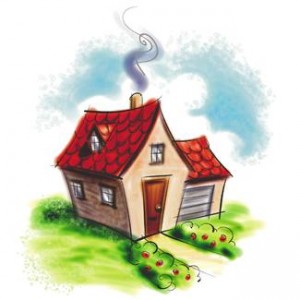Eric Frohmberg is the manager of the Maine Childhood Lead Poisoning Prevention Program and the chair of the Maine Healthy Homes Advisory Council. We asked him some questions about Healthy Homes. For more information, visit www.maine.gov/healthyhomes.
Can you explain the Healthy Homes concept?
Eric Frohmberg: If you think about how most of your life is spent, like many people, you probably spend about one third at work, school or busy in the community, one third at home and one third asleep, which means that you spend a lot of time in and around your home. As a society we have spent resources on making sure workplaces and schools are safe, but have spent very little on coordinated resources to help people ensure their homes are healthy and safe.
In the past, state and federal agencies have been addressing home health and safety issues as discrete problems. For example, we have programs to help fix lead paint problems which are completely separate from the programs that help with radon mitigation or fire prevention or pest control. The idea behind healthy homes is to coordinate responses and resources to address multiple issues at once.
Can you briefly explain how the Maine Healthy Homes Advisory Council works?
EF: The Maine Healthy Homes Advisory Council works to coordinate state and non-state agencies that provide advice on home-related health and safety issues. At its simplest, that means providing one area for the public and service providers to find information about home-related hazards (maine.gov/healthyhomes), coordinating activities so that limited resources are used effectively, and identifying gaps or needs that are currently not being addressed.
Healthy Homes is a broad concept, what are a few key things everyone should know to keep a home healthy?
EF:
- Lead poisoning: Almost all homes built before 1950 contain lead paint and dust from lead paint can be harmful to young children. If you have a child under 6 or are pregnant
Have questions about the effects of poisoning from lead, carbon monoxide, radon or pesticides? Call the poison center at 1-800-222-1222 or chat online. and live in a pre-1950 home, get a free kit to see if you have dust from lead paint.
- Well water safety: Maine has the highest fraction of households that rely on private wells for drinking water in the country. Many of these wells have too much arsenic or uranium—naturally occurring, but harmful chemicals. You can’t tell if you water has too much arsenic or uranium unless you test it. To find out how to test, visit wellwater.maine.gov.
- Carbon monoxide poisoning: About 100 people are poisoned in Maine by carbon monoxide each year. You can’t see, smell or taste this highly dangerous gas. Make sure you check boilers, furnaces and hot water heaters each year to prevent carbon monoxide leaks, and install carbon monoxide detectors that run on your home’s electricity and have a battery backup near where people sleep in your home.
- Radon: Radon is the number two cause of lung cancer. Many Maine homes have too much radon in the air and in the water. Learn how you can test your air and water for radon.
- Smoking: If you smoke, smoke outside. Secondhand smoke harms your children, your family members and your pets.
- Pests: If you have problems in your home with rodents or bugs, “think first, spray later.” See www.gotpests.org to learn how to control pests while keeping your family safe.
What are some ways that Healthy Homes has worked with or made use of the poison center? Do you see other ways that poison centers and Healthy Homes programs can collaborate?
EF: Accidental poisonings are an important Healthy Homes issue. The Northern New England Poison Center is part of the Healthy Homes Advisory Council and provides a unique perspective on their focus area of Healthy Homes. We incorporate their materials and perspectives when we do education and outreach to our target audiences, and they do the same with us. The Northern New England Poison Control Center also acts as our clinical resource for any kind of poisoning issue
What do you hope to see in the next five years to improve home-related health issues in Northern New England and the U.S.? Are there any potential policies or laws that you think would significantly improve the health and safety of Maine residents?
EF: Maine has one of the oldest housing stocks in the country. Many of those homes have not been maintained properly due to lack of funds. So old lead paint is peeling, roofs are leaking and many have damp dirt floors in the basements, which can contribute to mold growth. While there are funds to help address some of these issues the funds are much less than the need. The result is more Maine families needlessly suffering from lead poisoning, asthma and other health conditions. This puts a burden on the medical care system and costs the state much more money than by acting proactively to address these issues before someone gets sick.
Recognizing this imbalance, the Healthy Homes Advisory Council is currently conducting a needs assessment. Through this process we are identifying the existing resources and needs within the state, and identifying gaps in strategies and funding among the various types of home-related health and safety activities. At the completion of the assessment, it is my hope that programs will have the information they need to better coordinate efforts and work together to procure funding to address gaps.




